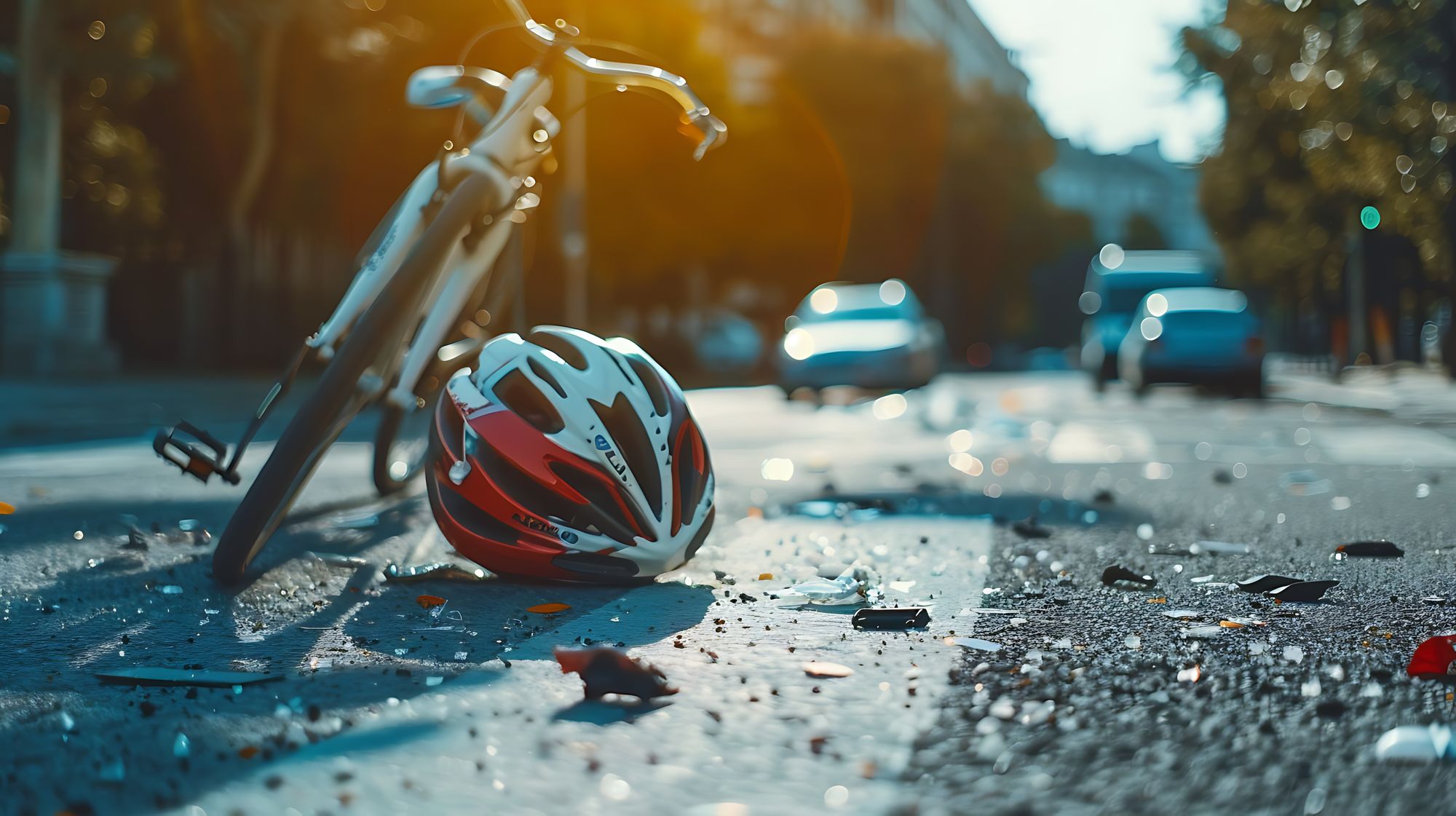
Cycling is an amazing way to get some exercise and fresh air and even run errands around town. But every cyclist has been there: you’re cruising along, feeling the wind in your face, when suddenly you hit a pothole or have to swerve around debris in the road. Road hazards are indeed an unavoidable reality when you’re on two wheels.
According to Toronto Police Data, about 2,362 cyclist injuries were recorded in that city alone from 2016 to 2021, and most of these accidents involve a pothole, crack, or debris in the road. That’s a pretty staggering number that shows just how critical it is for riders to be prepared for these obstacles. (1)
The good news is there are lots of smart strategies and defensive tactics you can use to dramatically increase your safety and give yourself the best chance of avoiding a nasty spill or collision. So, keep reading and go through our top tips for confidently handling whatever road hazards come your way when biking.
Be aware of your surroundings

Your first line of defence against driving hazards is maintaining a heightened sense of awareness. So, keep your eyes peeled and your head on a swivel. Constantly scan the road ahead for potential dangers like potholes, icy roads, debris, slippery roads, or obstacles in your path. Also, stay vigilant of the traffic around you, looking out for turning vehicles or drivers who may not see you.
Keep an eye on distracted drivers
Perhaps the scariest road hazard for cyclists is distracted road users or inattentive motorists. Even when following all the rules and being visible, a driver who’s texting, fiddling with the radio, or just overall reckless driving could easily strike you.
While you can’t control others’ negligence, one strategy is to ride defensively and anticipate potential mistakes. Preferably, maintain a safe buffer distance from vehicles and avoid drivers’ blind spots whenever possible.
When you’re at intersections, make eye contact with motorists before proceeding. And always be prepared to take evasive action, like quickly stopping or steering onto the shoulder. A driver’s lapse in attention could spell disaster if you’re not ready for it.
If you are involved in a cycling accident caused by a distracted driver, seeking legal counsel from a bicycle accident lawyer can be crucial. They can help you understand your rights and navigate the legal process.
Plan your route wisely
Savvy cyclists know the importance of route planning. So, before you hit the road, map a journey that prioritizes your safety. Look for paths with dedicated bike lanes or designated cycling trails whenever possible. These car-free zones offer a haven for cyclists, minimizing traffic interaction and providing a predictable riding experience. And if dedicated lanes aren’t available, opt for quieter residential streets over bustling main roads and construction zones. The fewer cars around you, the lower your risk.
If you’re cycling in a downtown area like Toronto or Ottawa, the roads and traffic patterns can be extra hazardous. Your best bet is to stick to designated bike routes as much as possible and avoid major streets during rush hours. Trails along the City of Toronto’s ravine system or the Ottawa River pathways offer a welcome escape from urban chaos. Just be extra cautious at intersections and trailheads where cars could cross your path unexpectedly.
Wear protective gear
No matter how cautious you are, accidents can still happen. That’s why sporting the proper protective biking gear is so vital. An approved bike helmet is an absolute must to protect your noggin in case of a spill. According to research, wearing a helmet reduces the risk of head injury by 63% to 88% in a cycling accident. (2)
You’ll also want visibility-enhancing clothes with reflective strips or bright colours so drivers can easily spot you. Meanwhile, padded bike gloves and glasses can further shield you from cuts and debris. With the right protective gear, you’ll be prepared for the unexpected on the roads.
Master bike handling skills
Developing expert bike handling abilities gives you a much better chance of avoiding or navigating around common driving hazards. So, practice techniques like emergency braking, quick steering, and scanning ahead so your reflexes are razor-sharp. Being able to quickly swerve around an obstacle or bring your bike to a controlled stop can quite literally be a lifesaver.
Learn how to deal with potholes and debris
Even on well-maintained roads, you’re bound to encounter potholes, cracks, or various debris at some point. Cities like Toronto are investing heavily to address this issue, with crews working to fill an astounding 175,000 potholes in 2022 alone to improve safety for cyclists and motorists. Your best bet is to avoid these common hazards entirely, if possible, by going around or changing lanes. However, if you can’t steer clear, you’ll need to safely navigate over or through them. (3)
For smaller potholes and cracks, shift your body weight back and slightly raise yourself off the seat, using your arms and legs as shock absorbers as you roll over. For larger holes or objects, you may need to carefully bunny hop over them by pushing down on the pedals to lift your front wheel, followed by a quick body lift to raise the back wheel. Active cyclists are also encouraged to report any unrepaired potholes they see on the streets to 311.
Be cautious in bad weather
Rain, snow, and poor visibility only amplify all the other road dangers, such as icy roads. Not only do these conditions increase stopping distances and lower traction, but they also make it harder for motorists to see you. In that case, it may be best to reschedule your ride for better weather whenever possible.
If you must bike in less-than-ideal conditions, go slowly, use your lights, and equip your wheels with studded tires or chains to improve your grip. Layer up with waterproof, high-visibility gear, too, to stay warm, dry, and seen.
Takeaway
Riding your bike can expose you to various road hazards, but with the proper preparation and vigilance, you can greatly minimize these risks. So, stay alert, plan smart routes, gear up properly, and hone your bike handling abilities. While crashes may be unavoidable at times, following best practices gives you the best chance of avoiding severe injury.






